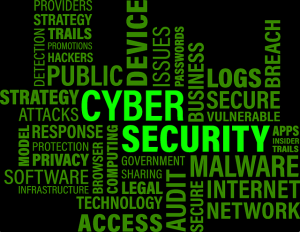Role of Technology in Transforming Urban Centers into Smart Cities

We live on a densely populated planet, with the number of people touching the 7.7 billion mark as of April 2019. When we refer to urbanization, we usually refer to the relocation of people from rural areas to towns and cities. That in itself is a sign of modernization, and it is understandable too, because who wouldn’t want to live in a civilized environment with more excellent job opportunities, a good lifestyle and better chances at life?
However, the ratio at which urbanization is taking place is worrying. According to last year’s statistics, urbanization has been increasing across the globe by 54 percent. But why is rapid urbanization a problem? In addition to population density, it brings with it unaffordable housing, poor infrastructure, a rise in crime, congestion, improper waste disposal, elevated energy consumption, and inefficient response to emergencies. It also adversely affects the quality of air and water and causes the creation of unregulated slums.
According to a specific school of thought, the expansion in the world cannot be entirely stopped or hindered; it can only be managed. So, the question that arises is: what is the best way to manage the ever-increasing urbanization? The answer is quite simple. It is possible through turning all urban centers into smart cities.
Here, the role of the internet of things (IoT) comes into play, referring to a system of interrelated devices that can transfer a lot of data to a particular network without any human intervention whatsoever. It brings forth several solutions such as smart traffic, waste and building management, intelligent lighting, and warning systems. To get a good grasp of the subject, you could choose to complete a smart cities course.
Now, let us take an in-depth look at the role of technology in bringing the transformation in our lives. We will also share with you some inspiring examples of thriving Smart cities.
Alerting an Entire City
The concept of smart cities is making things possible that were once considered unimaginable, and it is revolutionizing urban centers. The-state-of-the-art solutions have allowed for creating systems that can warn entire towns and cities, and save the inhabitants from disasters or the effects of few calamities.
The city of Louisville in the United States is a perfect example of this advancement. The city has introduced the concept of “applets” that connect the inhabitants with the smart-city data. For instance, lights in the residences change their color whenever there is an emergency in the vicinity. Citizens can be alerted if there is a change in the quality of the air. Moreover, they can be informed about any event using a digital invitation.
Parking Issues Resolved
The Spanish city of Santander has the honor of being one of the first smart cities around the globe, and rightly so. Since 2009, the city administration has distributed no less than 20,000 sensors among the residents. These sensors have been assisting the citizens in resolving major urban issues through creative solutions.
For example, the city has been conserving up to 80 percent of energy as the pathway lamps turn off automatically when there is no person nearby. Moreover, sensors get alerted about the moisture in the soil and turn the sprinklers on. What’s more surprising? Even the garbage bins send signals to the concerned authority, informing them to be emptied. Another defining solution has been in the parking sphere, where sensors can reroute traffic based on whether or not a space is free.
Smart Control of Environment
Smart cities have been resolving many issues that exist in urban centers, and the environment is no exception. Similar to Santander, the German city of Reutlingen is also making intelligent use of sensors by measuring the traffic and the atmosphere. Citizens can benefit from this by using a specially designed free app and receive real-time information on their phones. The app is also extremely useful in providing the inhabitants with the latest news and offers from nearby businesses. The city also has solar units that ensure just the right amount of supply of heating and energy.
Intelligent Exchange of Data
The right to information and freedom of choice has always been a heated issue when it comes to the problems linked with urbanization. The technology aids us in this area, too, by introducing a smart and intelligent way of data distribution.
With the City Data Exchange program, Copenhagen has offered its citizens, entities, and organizations the means to discover, receive, and publish data. Using the program, the residents can acquire useful information about the quality of the air and population growth. It empowers them, for instance, to find a location of their choice for business and trade. Another transformative smart city solution includes letting the citizens know about the fuel consumption, the time required to travel, and the calories burned in the process.
Networked Residences
Reutlingen once again makes the highlights concerning the transformation of urban centers and taking the investment for the initiative further. The city plans to build nearly 70 networked apartments, equipped with sensors that control the water faucets and doors. While those living in the units will be from diversified age groups, this system will be especially helpful for the elderly due to the functionality involved. Based on the success of the apartments, all residences may be equipped with the said systems.
The Takeaway
While the rapidly growing urbanization poses a massive challenge for the world, their transformation into smart cities carries the solution.
The smart cities mentioned above are only a few glimpses of what role the technology plays in bringing the much-needed revolutionary change in the lifestyles of the citizens. If it continues with the current pace and introduces newer and better technological solutions, the day is not far when every city across the world will turn into a smart city.






